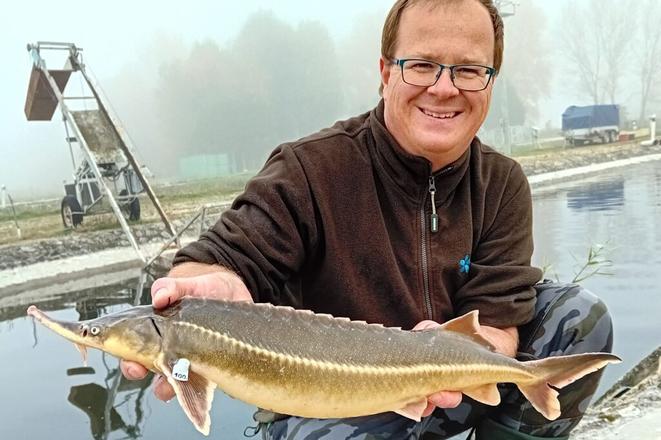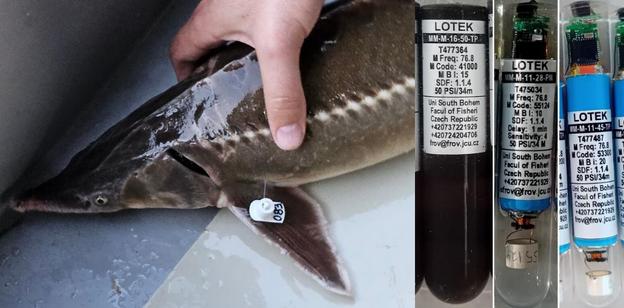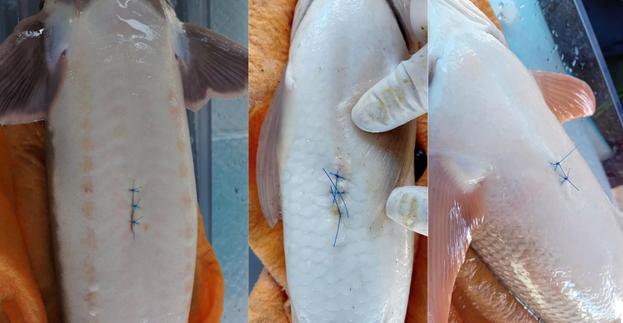In late October, scientists working in cooperation with fishermen released more than 200 native fish fitted with special transmitters into the River Danube as part of the LIFE Living Rivers project. The goal is to help experts to research the movement of fish in the Danube.
“With the help of receivers deployed at dams and in the open stretches of the Danube, we can determine exactly what obstacles our fish explorers will have to handle,” explained Bořek Drozd from the University of South Bohemia in České Budějovice. “Telemetry allows us to monitor where the fish are staying, where they encounter barriers, and where they can’t get to at all.”
The research will help them to show how much of a problem migration barriers located in the Slovak-Hungarian section of the Danube present to rheophilic fish species, i.e. fish that prefer to live in fast-moving water.
The project is being carried out by specialists from the Faculty of Fisheries and Protection of Water (FROV) at the University of South Bohemia in České Budějovice in cooperation with the Slovak Fishermen’s Association (SRZ), which is an associate member of the project.
Specialists from the Czech university installed small monitoring devices into the bellies of more than 200 native Danube fish – 50 asps, 50 common barbel and 114 sterlets – and released the fish back into the waters of the Danube.
The SRZ monitors a 100-kilometre stretch of the Danube from Bratislava to below the village of Medveďov, southern Slovakia.
“The main focus is the system of dams of the Gabčíkovo hydropower plant, and how passable the individual water management structures are for rheophilic fish species,” the SRZ reports on its website.
Fishermen to release the fish, if caught, back into the water
The data from the telemetry research are very important for further steps in the protection of Danube species. In order for the scientists’ efforts to bear the desired fruit, they need to keep the tagged fish swimming in the Danube for as long as possible.
“If fishermen catch a tagged fish, we ask them to record its details on the permit (date, area number, species, size) and return it gently back to the water,” the SRZ states.
Fish with transmitters are easily identifiable as they have a surgical scar on their belly with stitches left after the insertion of the small device. Sterlets are also marked with a white tag on the pectoral fin.
If a dead fish with a radio transmitter is found, the finder should report it (date, location of the find, name of the finder, contact) together with the identification data of the transmitter (M code - the fifth line on the label). Each device has contact details on the label.
Recovery of native fish species
One of the main objectives of the LIFE Living Rivers programme is to remove migration barriers or modify them to allow free passage of fish through rivers. In addition, the programme also plans other measures, such as the construction of fishways or ecological modifications of river beds, in order to support the recovery of populations of native fish species.


 Bořek Drozd from the University of South Bohemia, holding the 100th tagged sterlet (a species of sturgeon), whose journey along the Danube will be monitored as part of the LIFE Living Rivers project. (source: FROV JU)
Bořek Drozd from the University of South Bohemia, holding the 100th tagged sterlet (a species of sturgeon), whose journey along the Danube will be monitored as part of the LIFE Living Rivers project. (source: FROV JU)
 A sterlet “explorer” marked with a white label on the pectoral fin. Next to it are three types of transmitters with identifying data that fishermen might encounter in practice. (source: FROV JU)
A sterlet “explorer” marked with a white label on the pectoral fin. Next to it are three types of transmitters with identifying data that fishermen might encounter in practice. (source: FROV JU)
 Surgical wounds left after insertion of transmitters into the abdominal cavities of fishes used in the study. (source: FROV JU)
Surgical wounds left after insertion of transmitters into the abdominal cavities of fishes used in the study. (source: FROV JU)